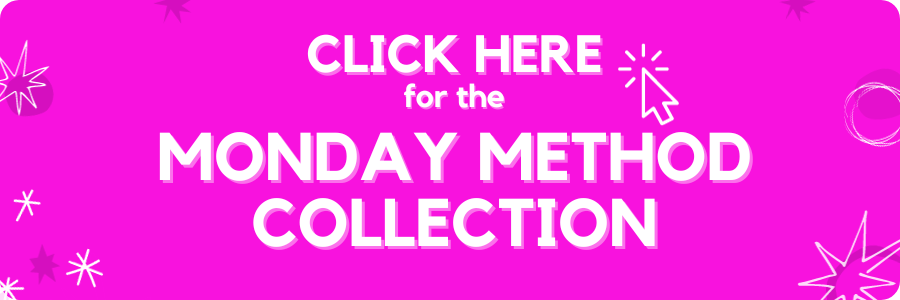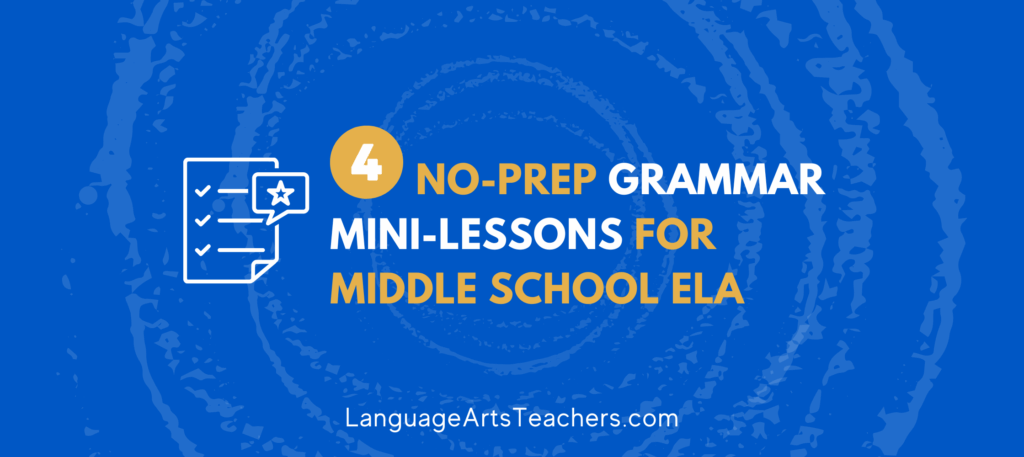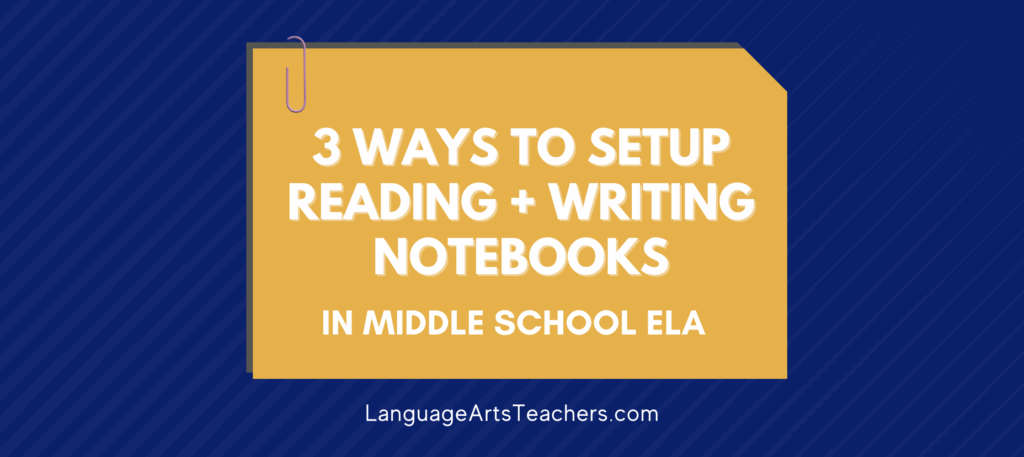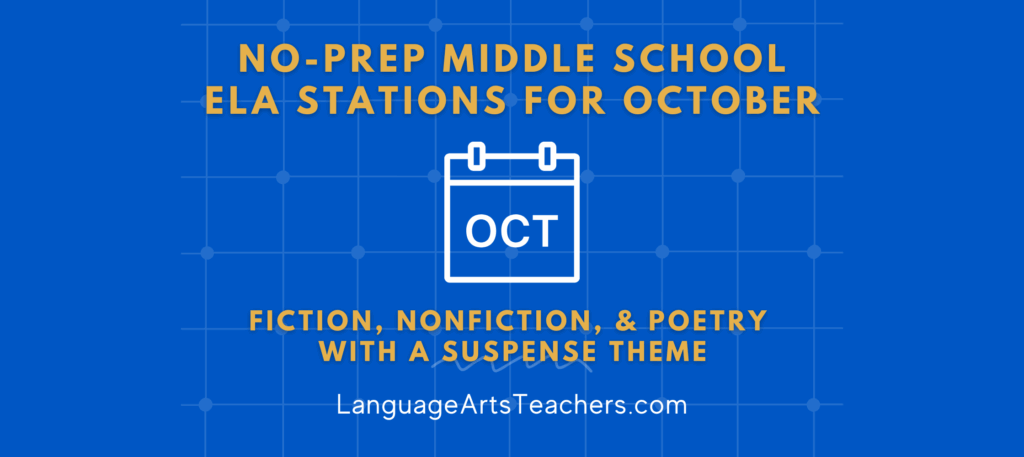What Would Your Weekends Feel Like if You Never Had to Plan What to Teach on Mondays for the entire school year?
Figuring out what to plan and how to start each week of school feels like running backward on a hamster wheel that never stops. . .
For me in ^that position as a busy, overwhelmed Middle School ELA Teacher, I KNEW it could be a total GAME CHANGER if I could figure out a way to consistently —
- Go home earlier each Friday if I had my FULL lesson for Monday already DONE
- Not even have to THINK about what’s happening in class on Monday ever again
- ENGAGE my students in ONE simple, ONE-PAGE article each week that embeds reading, writing, speaking, and listening skills (because I needed it all embedded)
- CONFIDENTLY say that YES, I AM teaching the concepts that make up 60% of the typical standardized test ➡️ Each week, ALL year long, with CONSISTENCY
^^^That’s what I wanted.
I didn’t know exactly what it might look like per se, but I knew— y’all, I KNEW—it had to be out there.
So I searched down every online rabbit hole, through every textbook resource, in between every file folder from my pre-digital teaching days for the ONE THING that would allow me to hit each component of my dream checklist bulleted above.
Nope. It didn’t exist. Everything that came close was too complex for my struggling students, or involved too much prep work on my part.
Or, it was just really random!
Welp, I love to write and I’m curious about people and history. . . So I slowly started creating the THING I was looking for but couldn’t find.
I wanted a method for all my Mondays!
. . . Something reliable that I could count on, and that my students could DO each Monday, all year long, without me having to constantly reteach the process each week.
That’s how my very own ✨Monday Method✨Nonfiction Article Collection was born!
After months and months of researching, writing, re-writing, testing with my students, and tweaking . . . The 32 Nonfiction Article ✨Monday Method✨ Collection is NOW the ultimate done-for-you set to ensure you bring consistently engaging nonfiction articles celebrating current and historically significant Americans into your classroom by using one per week (on Mondays!), all year long.
Here’s what I’ve developed, that you can have now, too:
- 32 simple one-page articles even your reluctant readers can access
- Standards-based discussion questions so you know it’s all high-level
- Teacher answer keys so you always feel confident leading discussions
- The freedom of knowing that once a week, your entire lesson is done!
Here’s what ^that all looks like in more depth⤵️
A simple lesson plan page that’s perfect for each and every ✨Monday Method✨article:
- Common Core + TEKS included so you don’t have to waste a second looking up tedious standards!
- Teaching ideas included so you have different ways of using the articles each week – no need to reinvent the lesson plan wheel!
Easy to print >> 32 separate one-page articles on the front & questions on the back OR ready to upload to your online e-learning platform!
- Printable for quick hands-on student access
- For digital learning, the PDF question sheet is ready to fill in with space to type right there
Simple, one-page articles perfect for the time-sensitive, super busy classroom with too much to do!
- Short articles are easily consumed and interesting for students
- Simple + compound sentence structure to support guaranteed comprehension and build reading confidence
Discussion Questions + Answer Keys:
- 4 Standards-based open-ended discussion questions per article PLUS answer keys included!
- Questions cover vocabulary or context clues, text-evidence, author’s purpose, inference, etc.
- No more starting from scratch with an answer key—facilitate discussions of answers with confidence!
Let’s take a look ~ real quick ~ at the power standards of the articles themselves:
Objective Students will be able to use text evidence to make logical inferences.
“I Can” Statement I can use text evidence to support my responses.
On top of those^ are many other skills, though . . . Vocabulary, author’s purpose, connections, and more! But regardless of what specific nonfiction standard or skill you need to review throughout the year, it ALL comes back to students desperately needing consistent practice with making LOGICAL inferences (not just any old inference) based on text evidence.
Each article in the ✨Monday Method✨Collection contains open-ended discussion questions (with answer keys) that support growth in these particular Common Core standards:
. . . AND in these particular Texas TEKS standards:
Here’s how you might plan to use the 32 ✨Monday Method✨articles⤵️
- 4 articles for September
- 4 articles for October
- 4 articles for November / December combined
- 4 articles for January
- 4 articles for February
- 4 articles for March
- 4 articles for April
- 4 articles for May / June combined
The ✨Monday Method✨ means that you assign one article per Monday, all year long. The goal is that your students get consistent, reliable nonfiction articles on a consistent basis while you as the teacher always know what you’re doing each Monday. It saves time, drastically reduces pressure and stress, and creates a standard routine for class which is exactly what we need coming off of pretty much any weekend!
However, there are other ways you can use these articles, too. Here are more options if you don’t want to stick with Mondays.
Teacher Ideas for Use Beyond the ✨Monday Method✨
Option 1: Assign one article on Monday and have it due by Friday.
Option 2: If Fridays are typically more stressful for you, then use on Fridays instead!
Option 3: Are you always looking for “station materials” for your class if you’re trying to run centers or stations? These articles work really well as station work!
Option 4: If you do a lot of intervention / RTI / tutoring at your school and you don’t want to use regular classroom resources, these articles are good for those purposes because they’re short and because they don’t have a ton of questions associated with them. In my experience, my own intervention time with students requires that we go deep with one topic, which means the reading passage has to be short enough to allow for reading, discussion, rereading, discussing what the questions are even asking before trying to respond to them, etc.
These articles have been a life-saver that way!
Otherwise, here’s how the ✨Monday Method✨ looks:
Read & respond on the same day, together. Students can submit responses on a shared document to promote both writing / typing AND discussion. This could be a shared Google doc, or a Padlet form, or any other tool to bring students’ responses together for a more engaging discussion. >> Maximum student engagement with fewer items for you to grade!
Search YouTube for a brief video highlighting the person of the week from the article, or for a video about a closely-connected concept from the article (Example: In Article #1 about Dr. Patricia Bath, you could find a video about her or a video about her invention… or both!).
Compare the information from the video to the information in the article and discuss new insights or types of information presented in both forms. You can do this as the teacher, or challenge your students to do this on their own to extend the learning and discussion.
Refer to your grade level standards to look for additional teachable moments or to see where to differentiate higher or lower depending on your students’ needs.
Remember that when it comes to engaging your students, they can listen to an audio recording of you reading the article (outside of class), or they can read it on their own. Or, you could read it aloud with them in real time— that’s actually my preferred method. Also, I have my students work with a partner / small group to “whisper read” it again for fluency practice and to reinforce the concept that we need to read carefully, more than once.




